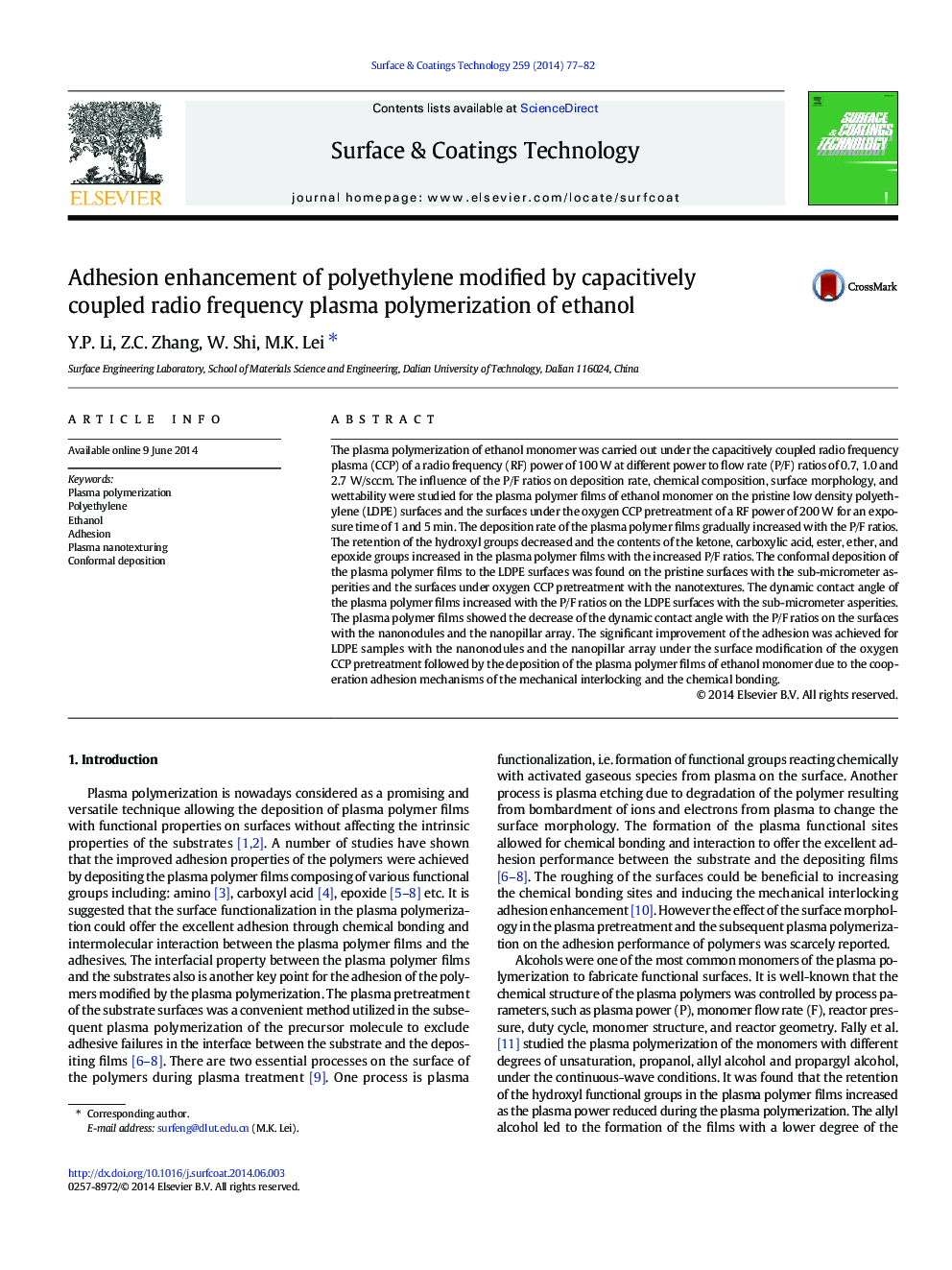| Article ID | Journal | Published Year | Pages | File Type |
|---|---|---|---|---|
| 1657440 | Surface and Coatings Technology | 2014 | 6 Pages |
•Adhesion of polyethylene was enhanced by deposition of plasma polymer of ethanol.•Mechanical interlocking and chemical bonding provided high adhesion strength.•Conformal deposition of plasma polymer film happened on a surface with nanotexture.•Retention of the hydroxyl group decreased with increased power to flow rate ratio.•The epoxide group appeared in plasma polymer film at high power to flow rate ratio.
The plasma polymerization of ethanol monomer was carried out under the capacitively coupled radio frequency plasma (CCP) of a radio frequency (RF) power of 100 W at different power to flow rate (P/F) ratios of 0.7, 1.0 and 2.7 W/sccm. The influence of the P/F ratios on deposition rate, chemical composition, surface morphology, and wettability were studied for the plasma polymer films of ethanol monomer on the pristine low density polyethylene (LDPE) surfaces and the surfaces under the oxygen CCP pretreatment of a RF power of 200 W for an exposure time of 1 and 5 min. The deposition rate of the plasma polymer films gradually increased with the P/F ratios. The retention of the hydroxyl groups decreased and the contents of the ketone, carboxylic acid, ester, ether, and epoxide groups increased in the plasma polymer films with the increased P/F ratios. The conformal deposition of the plasma polymer films to the LDPE surfaces was found on the pristine surfaces with the sub-micrometer asperities and the surfaces under oxygen CCP pretreatment with the nanotextures. The dynamic contact angle of the plasma polymer films increased with the P/F ratios on the LDPE surfaces with the sub-micrometer asperities. The plasma polymer films showed the decrease of the dynamic contact angle with the P/F ratios on the surfaces with the nanonodules and the nanopillar array. The significant improvement of the adhesion was achieved for LDPE samples with the nanonodules and the nanopillar array under the surface modification of the oxygen CCP pretreatment followed by the deposition of the plasma polymer films of ethanol monomer due to the cooperation adhesion mechanisms of the mechanical interlocking and the chemical bonding.
